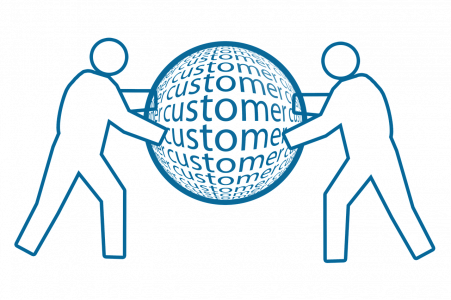
Too often, it feels like user experience is some ethereal concept. A phrase internet marketers use to sell people on. If you don’t know what “user experience” means, maybe you’ll be more willing to buy from someone who uses it repeatedly.
Of course, if you’re an SEOSiteCheckUp.com reader, you know full well what the user experience is. But still, even on this website, we haven’t made things very practical. And we apologize for that.
So today, we’re going to give you a direct metric to gauge the quality of your user experience. Note, this won’t guarantee your site’s user experience is phenomenal, but it will give you tangible insight on what “user experience” really means.
The concept we’re going to be discussing today is the total number of clicks it takes for your visitors to reach a particular page. Why is this important? Read on and find out!
From the User’s Perspective
The number of clicks it takes to reach a page matters from both the perspective of a user and a search engine bot. But since you should always be focusing on the user first, search engine second, we’re going to cover the user’s perspective first.
Language selection screen. We’ve all seen it before. You land on a page and it says, “what country are you from?” You select your country. Then it says, “what language do you speak?” You select your language. Then it directs you to the homepage that’s associated with your country.
And in some cases, there’s even another step before the redirect. Maybe a “select your product” page.
That’s four clicks just to get to the homepage!
Four clicks!
Is this something you want to be doing as a user? Clicking four times, waiting for four separate page loads to see the content you’re looking for? Of course not.
Now, you might say, “well, it’s necessary for those types of sites.” I think we can figure out a way to improve the user experience. What if it showed a landing page in English by default, but had a top bar that said “It looks like you’re visiting us from Argentina, would you like to view the site in Spanish?” (Obviously, this message would be in Spanish)
The majority of the visitors would be English speaking, but a few might be Spanish speaking. For those, they could easily use the top bar to switch pages.
This decreases the number of clicks from four to ZERO (or one for the minority of visitors).
From the Google Bot’s Perspective

Link juice – the essential ingredient to ranking on page #1. Link juice is funneled to your page through external links. You can then pass this juice throughout your website by internal linking practices.
But what happens if it takes four clicks to reach your landing page? Link juice is first directed to your main page. Then it’s directed to the second page. Then the third. And now, after three dilutions, it’s on your homepage.
This is obviously very bad for SEO. It guarantees that every link pointed to your first landing page is diluted. And since the majority of links will link to your domain name, the majority of your link juice will be diluted.
And so we see, once again, by optimizing for the user first, we’re also optimizing for the Google bots. By decreasing the number of clicks, not only do we ensure the maximum number of people hit our homepage as possible, but we also ensure our link juice is not diluted. So when we internally link, all of our second and third-tier pages are getting as much link juice as possible.
User experience first, search engines second. Or, think of it like only optimizing for the user. Trust us – Google rankings will follow.
Want More SEO/Online Business Tips?
If you liked the above article, fill out the form below to join our newsletter. You’ll be notified whenever we post something new.
If you’d prefer to be notified via Facebook, head on over to our page and shoot us a “like.” You’ll get the same updates, just on your newsfeed instead of your email.
Lastly, don’t leave the site without running a free on-page optimization check. If you’re not ranking on page #1, it could be due to something that’s very easy to fix. It makes sense to check now and fix it immediately, that way you’re not spending weeks or months in Google’s sandbox due to something you could fix relatively easily.
If you liked this article, you may also enjoy:
The Fall of SEO, the Rise of the Presentation
Digg: A Lesson in User Experience
- Pricing
- Free Tools
- Articles
- Login
- Free 7-Day Trial